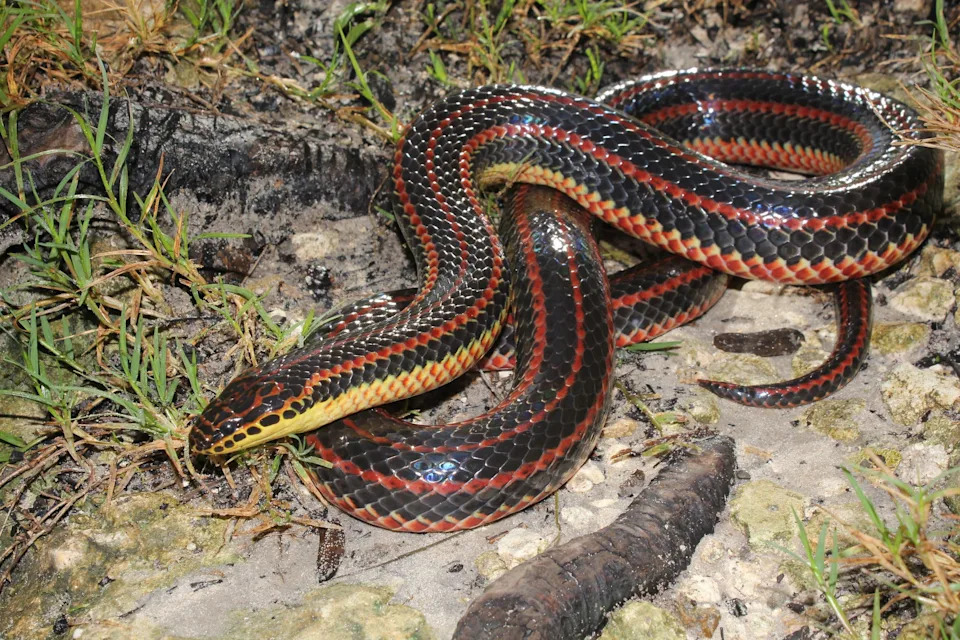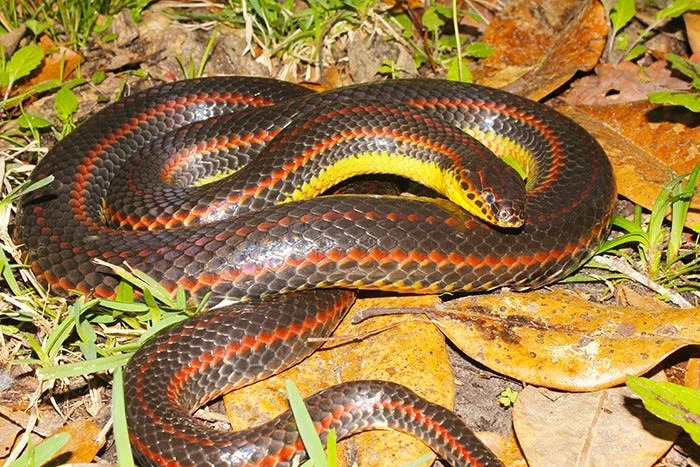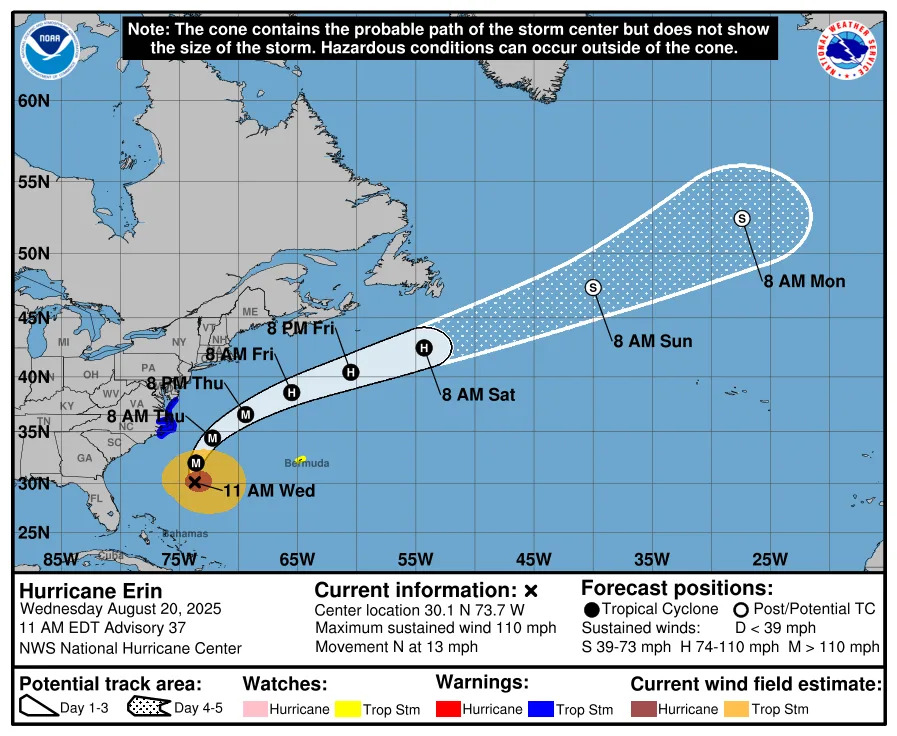Roughly a week after Florida's 2025 Python Challenge wrapped up, wildlife officials are asking the public to search for another snake. Just for very different reasons.
The Florida Fish and Wildlife Conservation Commission seeks the public's assistance in documenting the elusive rainbow snake, which has not been spotted in over five years.
“We need help from Floridians and visitors to better understand where rainbow snakes still occur in the state,” Kevin Enge, Research Scientist with FWC’s Fish and Wildlife Research Institute, said in an Aug. 18 press release. “Every sighting report gives us valuable data about their current distribution and helps us assess the health of the species in Florida.”
What is the rainbow snake? What does it look like?

The rainbow snake, scientifically known as Farancia erytrogramma, is a semi-aquatic reptile that primarily feeds on American eels, a prey species that has also declined in Florida waters.
According to the FWC, rainbow snakes are iridescent black or violet blue with three red stripes, and their lip and chin scales are yellow with violet spots.
Adults can reach up to 3 to 4 feet long.
How rare is the rainbow snake?

These snakes are considered super rare by the FWC, last spotted in February 2020. FWC spokesperson Jonathan Veach told USA TODAY that it is possible there were other rainbow snake sightings in Florida since then, but either "they weren't reported or we never learned of them."
Their numbers have dwindled due to habitat loss, loss of food source and cases of snake fungal disease.
Are rainbow snakes venomous?
No, rainbow snakes are nonvenomous.
Where is the rainbow snake found?
The FWC says the rainbow snake is usually found in or near water, including rivers, springs and brackish marshes. The Florida Museum adds that rainbow snakes are found throughout the Panhandle and in parts of the northern peninsula along the St. Marys River drainage, St. Johns River drainage, and Suwannee River drainage.
The FWC notes that one South Florida subspecies was historically found in Fisheating Creek in Glades County, adding that "location is more than 150 miles south of the nearest known population in Lake County, but hasn’t been documented since 1952."
How to report a rainbow snake sighting
The FWC is requesting that anyone who spots a rainbow snake report the sighting to the commission online.
"Photographs are especially helpful in confirming sightings and can be included when you submit your sighting online," the commission said. "By sharing sightings, the public can play an important role in conserving this unique species."
This article originally appeared on Tallahassee Democrat: What are rainbow snakes? Have you seen rare snake? FWC wants to know








Comments